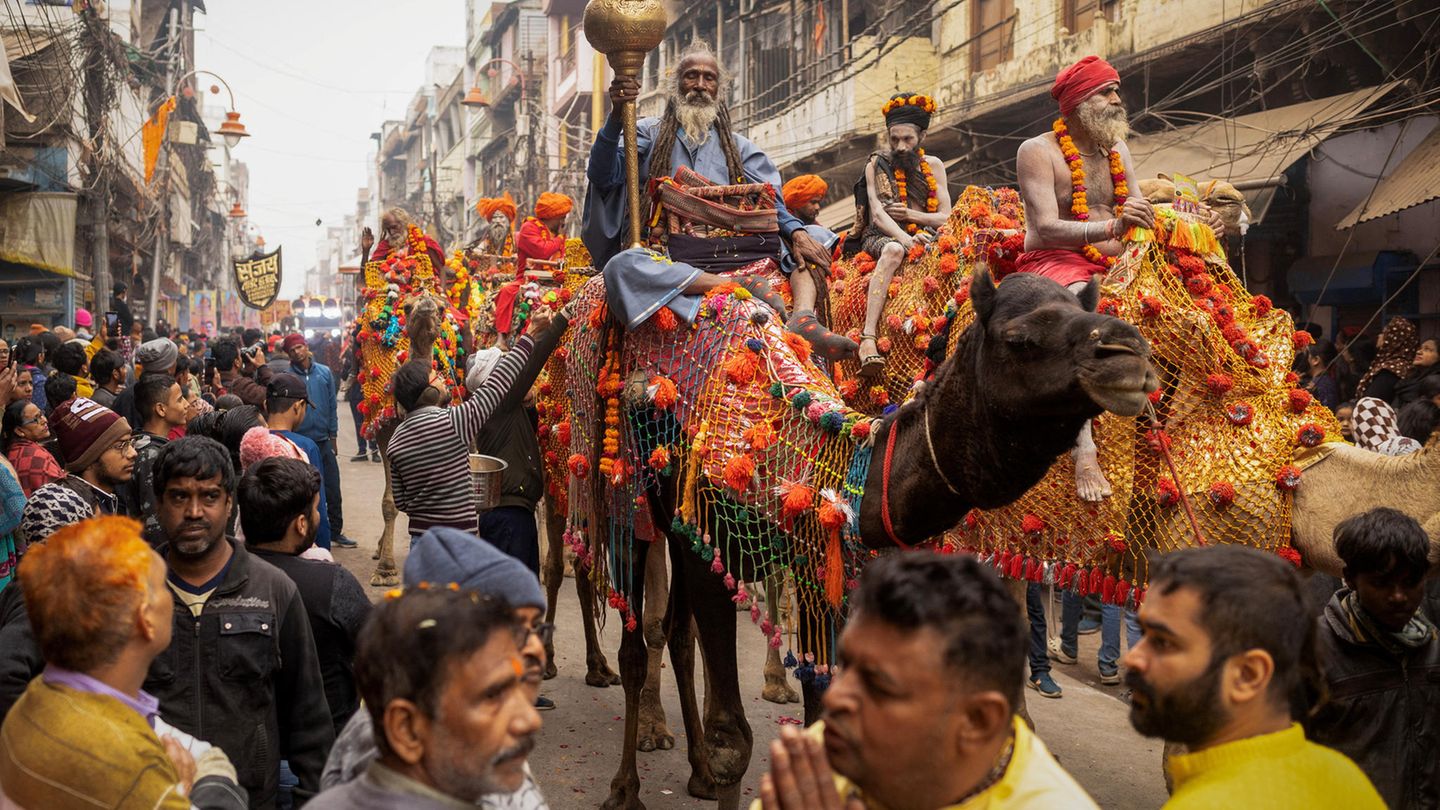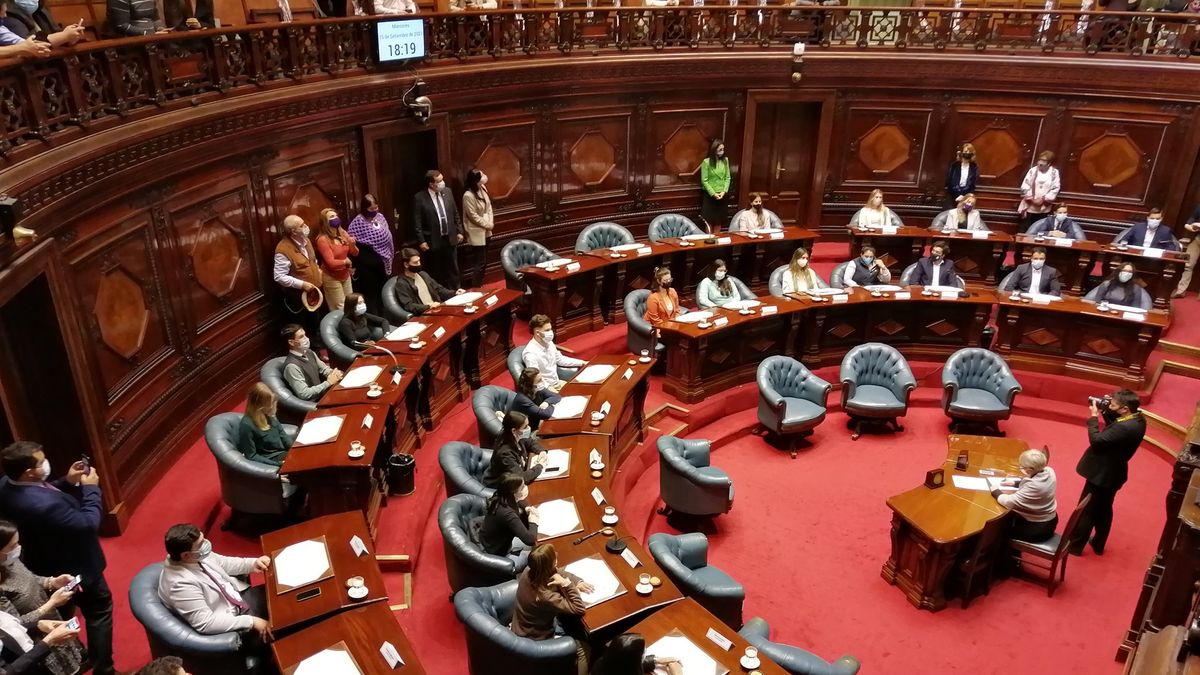Simply explained
Hellish neighbors: What is the dispute between India and Pakistan about?
Copy the current link
Add to the memorial list
The conflict between the majority of Hindu India and Muslim Pakistan threatens to escalate again. What happened this time? And: where does the hatred actually come from?
Take three nuclear powers, two world religions and a controversial spot earth. That India and Pakistan (and China) have not been green for decades is (somehow) known. But why do the neighbors get into bloody arguments every few years? And what is the trigger this time?
What is the conflict between India and Pakistan in Kashmir?
The rapidly rising states have been balancing a region for decades, about three times as large as Bavaria: Kashmir. The ethnically and religiously various territory in the Himalaja with its approximately 15 million inhabitants is strategically extremely important – it is located in the border triangle between Pakistan in the west, India in the south and China in the north and east. India and Pakistan claim the entire area for themselves, but have only checked a part, India around half for around 80 years. In addition, several Muslim rebel groups have been fighting for Kashmir’s independence since 1989, partly for connecting the region to Pakistan.
India and Pakistan wars have already led to Kashmir twice and delivered countless battles around the region, tens of thousands have already died. To date, India has stationed around half a million soldiers in the region. However, airplanes or ground troops rarely crossed the heavily guarded demarcation line, which the Himalaya region divides into two parts.
Maha Kumbh Mela – where bathing meets praying

A religious procession in Prayagraj on Sunday before the Maha Kumbh Mela begins. Thousands of people prepare for the celebrations
© Adnan Abidi / Reuters
More
Open the image subtitle
Back
Further
What has happened to the past 80 years?
For an overview of one Chronology of the clashes of the two nuclear powers in the border region:
- 1947: The First war for cashmere Shortly after the division of the Indian subcontinent into the Hindu India and Muslim Pakistan breaks out after the end of British colonial rule. Kaschmir’s Hindu MaharaScha asks Neu-Delhi for help and agrees to join its mostly Muslim region to India after fighters from Pakistan have attacked the area. Two years later becomes Kashmir shared.
- 1962: China occupied The to date controlled by India Aksai-Chin-Plateau in the East.
- 1965: India and Pakistan fight in a short one second war Again by cashmere until a ceasefire is proclaimed. Separatists form under the banner of the Jammu Kashmir Liberation Front, from now on Independent cashmere Fights – by all means.
- 1971: In one third war This time India and Pakistan are fighting for Islamabad’s rule over East Pakistan, today’s Bangladesh. New Delhi supports the Bengal independence fighter and flies bomb attacks in Pakistani area.
- 1984: Indian troops occupy the glacier Search of the Karakoram Mountains, which is also claimed by Pakistan. The first of numerous battles around the remote, uninhabited area follows until 2003 a ceasefire is signed.
- 1999: Fighters supported by Pakistan exceed the controversial cashmereBorder And conquer Indian military posts in the icy heights of the north Indian province of Kargil. Indian troops push the intruders back. The ten-week Kargil conflict Costs 1000 people on both sides.
- 2008: India and Pakistan open a cross -border for the first time Trade route In cashmere.
- 2010: With government -critical Protests In the Indian part of Kashmir 100 people die.
- 2016: India starts limited in September Attack At goals In the Pakistani part of Kashmir. Two weeks earlier, rebels had an attack on an Indian military base 19 people killed. Pakistan denies that the Indian attacks ever took place. In November, fighters disguised as police officers storm an Indian base near the border and kill seven soldiers.
- 2019: The Indian government under Narendra Modi lifting the far -reaching Autonomy status “his” part of Kashmir And split it into two sub -regions. Contrary to the previous promise, Neu-Delhi has been increasingly interfering in the politics of the Muslim region, postponing elections, falsifying constituencies in favor of Hindus, arrested local politician. Separatists are increasingly acting from the surface. In June 2024 die at one stop on one bus Nine people with Hindu pilgrims.
… and what this week?
The conflict that has been smoldering since then went into the next round this week. What happened?
-
Tuesday: Armed attacker kill On a mountain meadow in a popular holiday area near the city of Pahalgam in the part of Kashmir managed by India 26 peopleat least 17 more are injured. Most of them are Indian holiday guests. A Act of terrorAt least for the Pakistan, it says from New Delhi. Finally, the terrorist group has excellent connections to Islamabad. They show every participation there – only that helps little. India’s Prime Minister Narendra Modri threatens to “punish inhuman terrorists and their co -snacks” would “punish more than they can imagine”.
- Wednesday: India terminates hard Retaliation to. In addition to the Closure of the most important border crossing And the expulsion of all Pakistani diplomats explains Neu-Delhi to suspend the extremely important contract for Pakistani agriculture on the use of the rivers. In other words: They want to turn off the water to the neighbors. Which in turn promise to see this as a war action that “with the entire spectrum of national power” would be answered.
- Thursday: India goes one step further. All Pakistani citizens should Leave the country until April 29thVisa or not. For its part, Pakistan orders the departure of all Indians (with the exception of Sikh-Pilgern). All Limits should be closedthe airspace For Indian aircraft blockedthe Handel exposed become.
- Friday: At night it comes to the demarcation line Change of shooting between Indian and Pakistani soldiers. Apparently there are neither dead nor injuries. “Life continues normally,” says a government representative in the Pakistani part.
Sources:; “,; AFP and dpa
yks
Source: Stern
I have been working in the news industry for over 6 years, first as a reporter and now as an editor. I have covered politics extensively, and my work has appeared in major newspapers and online news outlets around the world. In addition to my writing, I also contribute regularly to 24 Hours World.




